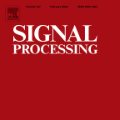The recovery of Dirac impulses, or spikes, from filtered measurements is a classical problem in signal processing. As the spikes lie in the continuous domain while measurements are discrete, this task is known as super-resolution or off-the-grid sparse recovery. Despite significant theoretical and algorithmic advances over the past decade, these developments often overlook critical challenges at the analog-digital interface. In particular, when spikes exhibit strong-weak amplitude disparity, conventional digital acquisition may result in clipping of strong components or loss of weak ones beneath the quantization noise floor. This motivates a broader perspective: super-resolution must simultaneously resolve both amplitude and temporal structure. Under a fixed bit budget, such information loss is unavoidable. In contrast, the emerging theory and practice of the Unlimited Sensing Framework (USF) demonstrate that these fundamental limitations can be overcome. Building on this foundation, we demonstrate that modulo encoding within USF enables digital super-resolution by enhancing measurement precision, thereby unlocking temporal super-resolution beyond conventional limits. We develop new theoretical results that extend to non-bandlimited kernels commonly encountered in practice and introduce a robust algorithm for off-the-grid sparse recovery. To demonstrate practical impact, we instantiate our framework in the context of time-of-flight imaging. Both numerical simulations and hardware experiments validate the effectiveness of our approach under low-bit quantization, enabling super-resolution in amplitude and time.
翻译:暂无翻译



